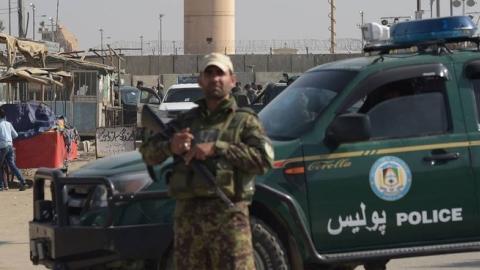The Nov. 12 suicide bombing at a NATO air base outside Kabul, Afghanistan, which killed four Americans, should remind President-elect Donald Trump of the need for a decisive victory in Afghanistan against jihadist extremism. Although Afghanistan was barely mentioned during the recent campaign, it is where the 9/11 attacks were planned and where the U.S. first went to war to eliminate global terrorism waged in the name of Islam.
While Islamic State in the Middle East constitutes a compelling threat, Afghanistan, with Pakistan, remains the world’s most-active incubator of terrorism. It is also where the next administration must learn from the errors of the past.
During the George W. Bush administration, from the end of 2001 through 2008, there were 625 U.S. military fatalities sustained during the Afghanistan combat mission known as Operation Enduring Freedom, according to the Defense Casualty Analysis System in the office of the Secretary of Defense. By the end of that period, when Barack Obama was elected president, al Qaeda was presumed to have been considerably weakened and its remnants forced to relocate to other countries. The Taliban, now operating from havens in Pakistan, were deemed an irritant, not a serious challenge to U.S. or global security.
In hindsight, what happened next was a strategic miscalculation. The Obama administration initially increased the number of U.S. troops stationed in Afghanistan with a “surge” intended to bolster Afghanistan’s security forces while sending a message to Pakistan to crack down on Taliban sanctuaries on its side of a porous border. But in the first of several mistakes, the additional troops were sent into Afghanistan with a withdrawal timeline for U.S. forces. This led the Taliban and their Pakistani backers to believe they could sit out Mr. Obama’s deadline for leaving their region.
So instead of forcing the Taliban into surrender, the withdrawal timetable led to their resurgence. During the six years from the beginning of 2009 to the end of 2014, when the Operation Enduring Freedom combat mission officially ended in Afghanistan, the Defense Department reported 1,761 American military fatalities—more than double the number killed during seven years of the Bush administration.
Another key mistaken belief was that the U.S. and NATO allies could train an Afghan army and other security forces within a few years before leaving the country. Afghan soldiers showed courage in fighting the Taliban, but they still needed competent and experienced commanders, which take decades to produce. For this plan to work would have required the retention of U.S. advisers, if not large numbers of American field fighters. For that reason alone, the December 2016 deadline set by Mr. Obama for withdrawal of troops from Afghanistan could not be met.
Another presumption, inherited from the Bush administration, was that in dealings with Pakistan, incentives such as economic and military aid, and reimbursements for expenses incurred in fighting terrorists, would change Pakistan’s strategic calculus from backing the Taliban.
Yet nuclear-armed Pakistan sees itself very differently from how the world does. For the generals in Islamabad, and many civilian leaders, Pakistan’s competition with India justifies breaking promises with the U.S. and continuing support for jihadist terrorism, from the Taliban to the Haqqani network, as part of its plans for regional influence to match India’s. So $21 billion in funding under the Obama administration could not change Pakistan, just as $12.4 billion given to Pakistan under the Bush administration failed to shut down its terrorism incubators.
Under President Obama, the U.S. did manage to hunt down Osama bin Laden in his safe house in Pakistan, without Pakistan’s permission. The Trump administration will have to embrace similar unilateralism if and when needed, in addition to the almost inevitable downgrading of Pakistan from its current status as a major non-NATO ally.
But getting Pakistan policy right—including a review of the predicates for any aid—remains the key to U.S. victory in Afghanistan. Until the rise of ISIS in Syria and Iraq, Afghanistan and Pakistan were the principal training grounds for Islamist terrorists. Virtually all of the al Qaeda terrorists convicted in Britain since 2001, including the July 7, 2005, London Underground bombers and Dhiren Barot, the so-called “Dirty Bomber,” got trained in Pakistan.
Former French Investigating Magistrate Jean-Louis Bruguiere observed in his 2009 book, “What I Could Not Say,” that almost every terrorist apprehended by European security services over the last two decades has either studied and trained or passed through Afghanistan or Pakistan. Currently ISIS is vying with al Qaeda-linked groups for recruits in Afghanistan and Pakistan.
The rise of global jihadism was made possible by America’s preoccupation with current news while the Soviet bloc crumbled during the first couple of years of the 1990s. This time, the U.S. should not ignore the Afghanistan-Pakistan theater because the brutalities of ISIS, and its proximity to Europe, are the immediate cause of concern.



















